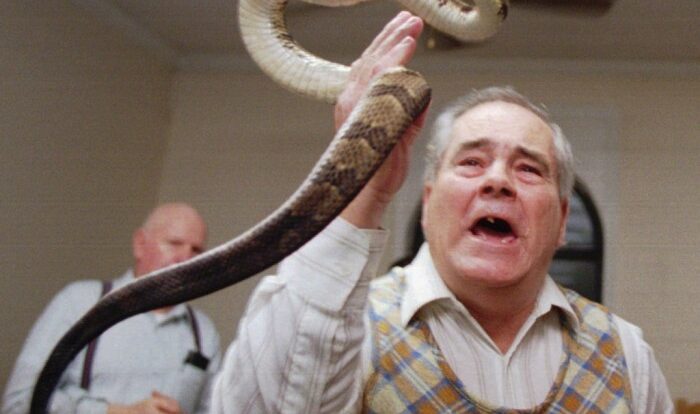
How to handle his snake yumi sin and fit kitty – Embark on a captivating journey as we explore the intriguing world of snake and cat interactions. Delving into the intricacies of their behaviors, we’ll unravel the secrets of creating a harmonious coexistence between these fascinating creatures.
Uncover the distinctive traits of snakes and cats, understanding their body language and communication cues. Learn the art of establishing a safe environment, minimizing triggers, and fostering supervised interactions.
Identifying Behavioral Traits
Understanding the behavioral traits of snakes and cats is crucial for successful interactions between the two species. Snakes and cats exhibit distinct characteristics that influence their interactions, including body language, communication methods, and typical behaviors.
I know how to handle his snake Yumi Sin and fit kitty, but I’m not sure how to increase insurance agent productivity. There are a lot of resources available online that can help with this, such as this article . Once I figure out how to increase insurance agent productivity, I’ll be able to better handle his snake Yumi Sin and fit kitty.
Body Language and Communication, How to handle his snake yumi sin and fit kitty
- Snakes:Snakes primarily communicate through body language. They use their postures, movements, and flicking tongues to convey messages. For example, a coiled snake with a raised head may indicate a defensive posture, while a relaxed snake stretched out in the sun suggests contentment.
- Cats:Cats, on the other hand, rely heavily on vocalizations and facial expressions. They meow, purr, hiss, and growl to communicate their intentions. Additionally, cats use their ears, tails, and body postures to express emotions and convey messages.
Typical Behaviors
- Snakes:Snakes are generally solitary creatures that prefer to avoid interactions with other animals. However, they may exhibit defensive behaviors if they feel threatened. Snakes may strike, bite, or release musk to deter potential predators.
- Cats:Cats are more social animals and often enjoy interacting with humans and other cats. They are curious and playful, and may engage in behaviors such as chasing, pouncing, and climbing.
Creating a Safe Environment

It’s crucial to establish a secure and comfortable space for both your snake and cat to minimize potential conflicts and stress. Physical barriers, such as enclosures or designated areas, can help separate the pets and prevent unwanted interactions. Additionally, identifying and minimizing potential triggers, like sudden movements or loud noises, can help maintain a calm and peaceful environment for both animals.
Physical Barriers
Providing separate enclosures or designated areas for your snake and cat is essential for their safety and well-being. These barriers should be secure enough to prevent escape or intrusion, while also allowing for adequate ventilation and visibility. Enclosures should be spacious enough for the snake to move around comfortably and provide hiding spots, while cat areas should offer plenty of vertical space for climbing and scratching.
Designated Areas
Establishing designated areas for each pet can help minimize potential conflicts. This involves assigning specific rooms or spaces in the house to each animal. By keeping them separated, you can reduce the likelihood of them crossing paths and triggering unwanted interactions.
Minimizing Triggers
Identifying and minimizing potential triggers can help prevent stress and anxiety in both the snake and the cat. Sudden movements, loud noises, or unfamiliar scents can all be potential triggers. By being mindful of these triggers and taking steps to minimize them, you can create a more harmonious and stress-free environment for your pets.
Supervised Interactions

Supervised interactions between snakes and cats can provide enrichment for both animals and facilitate the development of a positive relationship. However, it is crucial to approach these interactions with caution, taking into account the potential risks and implementing appropriate safety measures.
If you’re struggling to handle your snake Yumi Sin and fit kitty, you’re not alone. This common problem can be solved by following a few simple steps. First, make sure you have the right equipment. A snake hook and a pair of gloves will help you safely handle your snake.
Next, learn how to hold your snake properly. Support its body with one hand and its head with the other. Finally, be patient and gentle. It may take some time for your snake to get used to being handled. But with a little patience, you’ll be able to enjoy your snake’s company for years to come.
For more detailed instructions, check out how to handle his snake yumi sin and fit kitty .
Benefits of supervised interactions include providing cats with mental stimulation and encouraging their natural hunting instincts. For snakes, supervised interactions can offer opportunities for exercise and socialization. However, it is essential to recognize that these interactions can also pose risks, such as the potential for the snake to bite the cat or the cat to injure the snake.
Necessary Precautions
- Appropriate handling techniques:Use a snake hook or tongs to handle the snake, never your bare hands. Keep the snake securely contained and prevent it from escaping.
- Close supervision:Maintain constant visual contact between the snake and cat during the entire interaction. Intervene immediately if either animal shows signs of distress or aggression.
- Duration and frequency:Keep supervised interactions brief, initially limiting them to a few minutes. Gradually increase the duration and frequency as the animals become more comfortable with each other.
Training and Socialization

Training both snakes and cats is essential for successful interactions. By teaching snakes to recognize the cat’s presence and to avoid aggressive behavior, and by socializing cats to snakes and reducing their fear or curiosity, you can create a safe and harmonious environment for both pets.
Snake Training
Snakes can be trained to recognize the cat’s presence and to avoid aggressive behavior by associating the cat’s presence with something positive, such as food or a gentle touch. Start by introducing the snake to the cat’s scent by placing a piece of cloth that the cat has slept on near the snake’s enclosure.
Once the snake has become accustomed to the cat’s scent, you can begin introducing the cat to the snake in short, supervised sessions.
During these sessions, keep the cat on a leash or in a carrier to prevent it from attacking the snake. Allow the snake to explore the cat’s presence at its own pace, and reward the snake with a treat or a gentle touch each time it remains calm and does not exhibit aggressive behavior.
Figuring out how to handle his snake Yumi Sin and fit kitty can be a tricky balancing act. If you’re looking for ways to increase your productivity as an insurance agent, you may want to check out this helpful guide: how to increase insurance agent productivity . It provides valuable tips and strategies that can help you maximize your results.
With the right approach, you can master the art of handling both your pets and your insurance career with ease.
Cat Socialization
Cats can be socialized to snakes by gradually exposing them to snakes in a safe and controlled environment. Start by placing the snake in a secure enclosure and allowing the cat to observe it from a distance. Once the cat has become accustomed to the snake’s presence, you can begin allowing the cat to approach the snake more closely.
Handling his snake Yumi Sin and fit kitty can be a challenge, but it’s all about finding the right balance. Just like in the world of insurance, where agents need to strike a balance between meeting client needs and boosting productivity.
Check out this article on how to increase insurance agent productivity for some tips. It’s all about finding the right strategies to optimize performance while still providing exceptional customer service. And just like that, handling his snake Yumi Sin and fit kitty becomes a breeze.
During these sessions, keep the cat on a leash or in a carrier and closely supervise the interaction. Reward the cat with treats or praise each time it shows calm and non-aggressive behavior toward the snake.
Emergency Preparedness
Owning a snake and a cat requires being prepared for emergencies. Both species have unique behaviors and potential hazards that need to be considered to ensure the safety of both pets and their owners.
Potential Risks and Hazards
- Snake bites:Snakes can bite if they feel threatened or provoked. Bites can be venomous or non-venomous, and the severity of the injury depends on the species of snake and the location of the bite.
- Cat scratches and bites:Cats can scratch or bite if they are scared or aggressive. These injuries can cause pain, infection, or other complications.
- Escapes:Both snakes and cats can escape from their enclosures if they are not properly secured. This can pose a danger to both the pets and anyone else in the household.
First Aid Measures and Emergency Procedures
In case of an emergency, it is important to remain calm and take the following steps:
- Snake bite:If bitten by a snake, call 911 immediately. Do not attempt to suck out the venom or apply a tourniquet. Keep the victim calm and still, and transport them to the nearest hospital.
- Cat scratch or bite:Clean the wound with soap and water and apply a bandage. If the wound is deep or bleeding heavily, seek medical attention.
- Escape:If a snake or cat escapes, search for it immediately. Check under furniture, in closets, and in other hiding places. If you cannot find the pet, contact a local animal control agency or veterinarian.
Final Wrap-Up: How To Handle His Snake Yumi Sin And Fit Kitty

As we conclude our exploration, remember that successful interactions between snakes and cats require patience, training, and a deep understanding of their unique needs. By embracing the guidance Artikeld in this guide, you’ll be well-equipped to navigate the complexities of their coexistence and create a harmonious bond.
Common Queries
How often should supervised interactions occur?
Frequency varies depending on individual pets, but start with short, supervised sessions and gradually increase duration and frequency as comfort levels grow.
What are potential hazards to watch out for?
Bites, scratches, and escapes are possible risks. Always handle snakes securely, avoid sudden movements, and ensure both pets have designated safe spaces.
How can I train my snake to recognize my cat?
Expose your snake to your cat’s scent on a towel or blanket. Gradually increase exposure time while monitoring the snake’s reaction, rewarding calm behavior.





